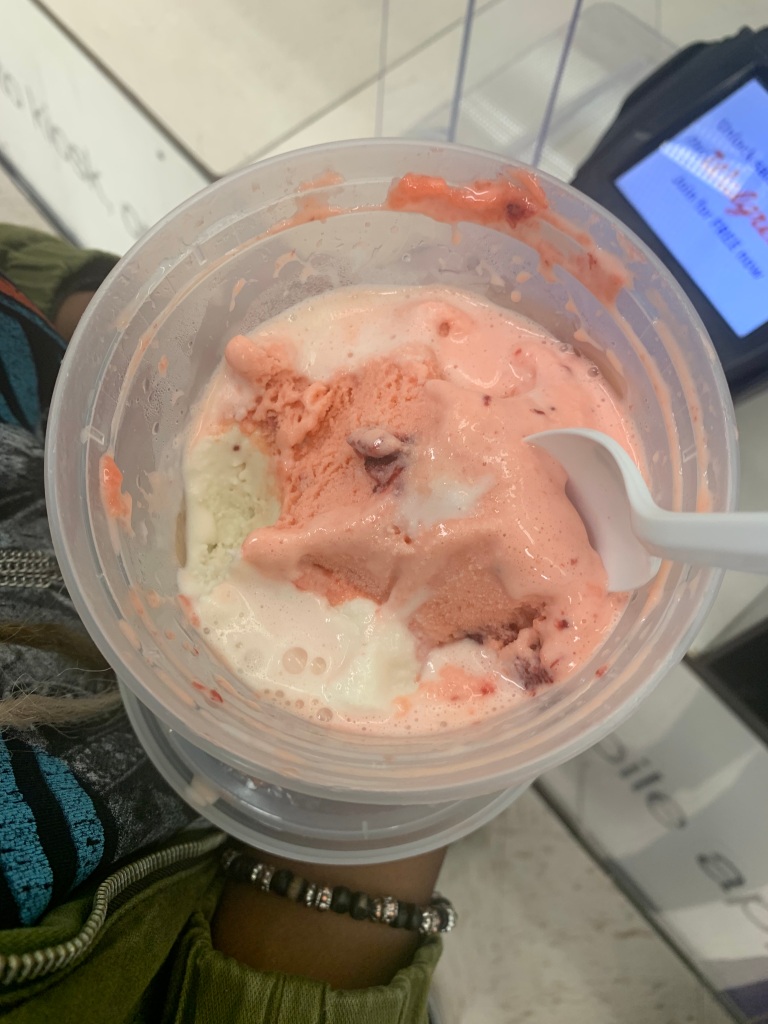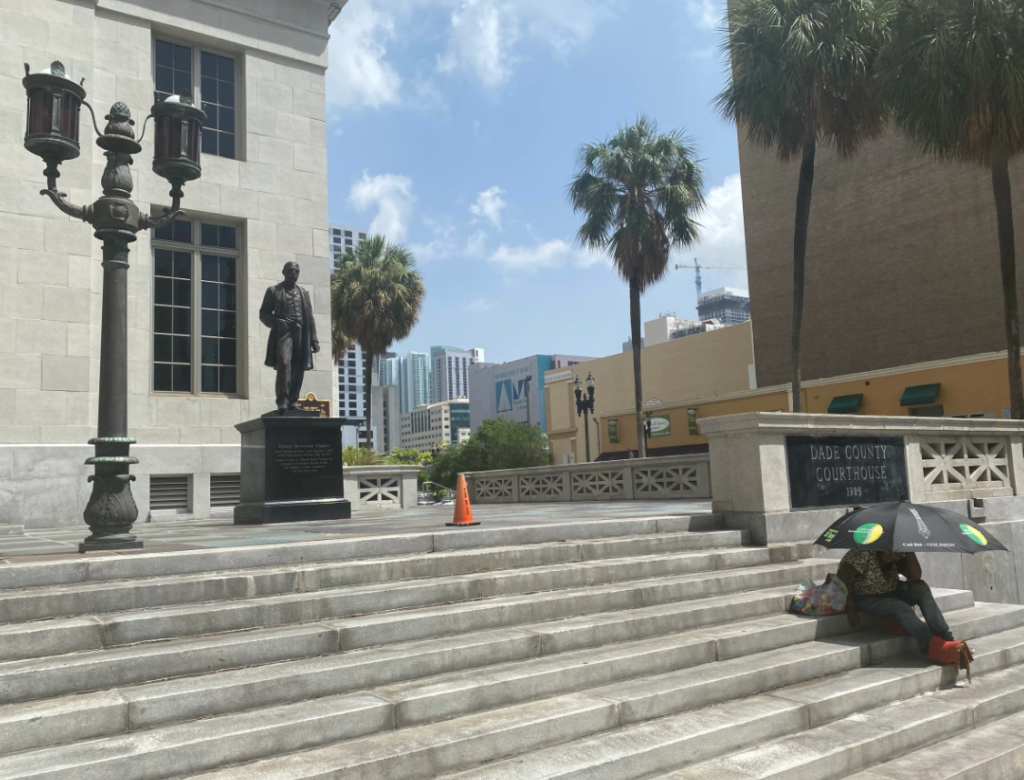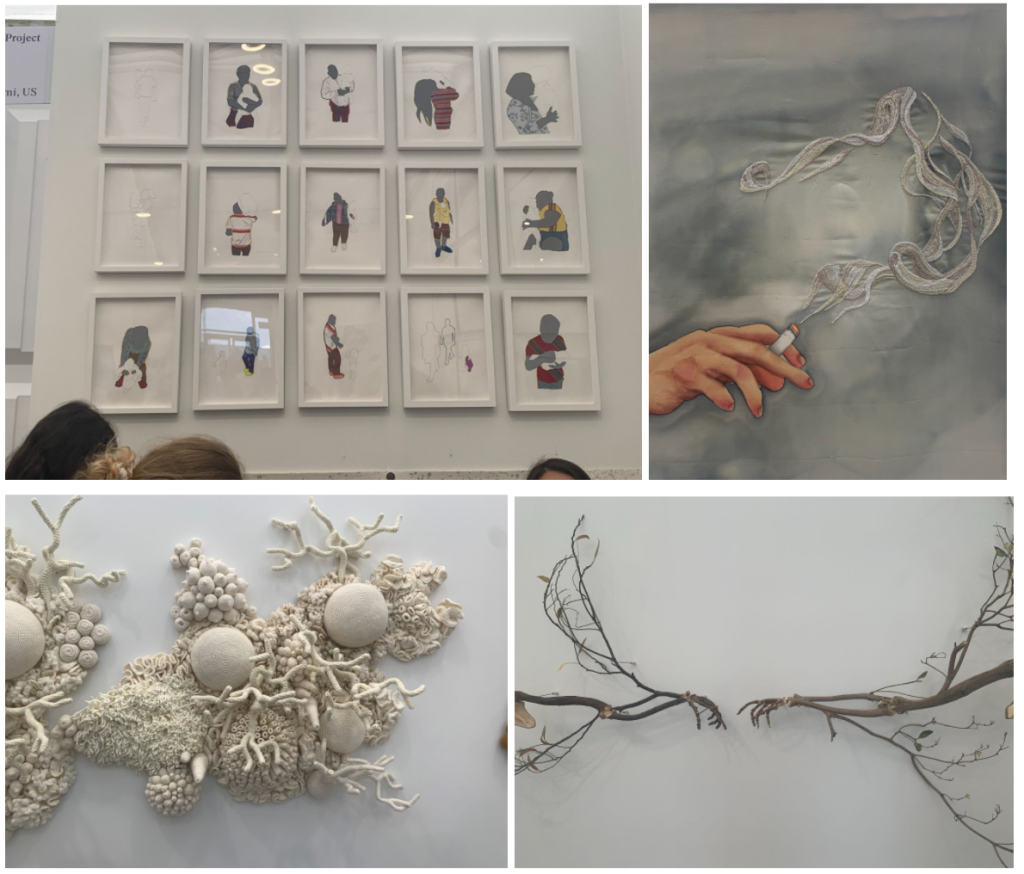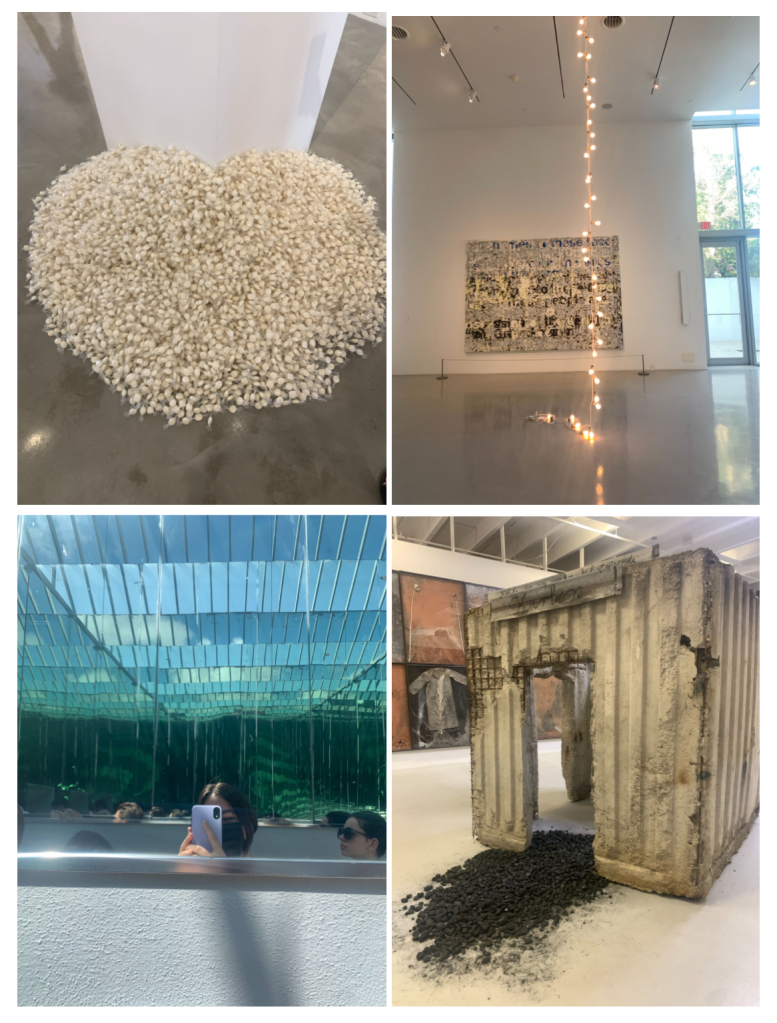
Paola Castro is a senior majoring in Computer Science at Florida International University. Having grown up in Puerto Rico, and later coming to pursue higher education in south Florida, she was able to meet other people of various cultural backgrounds and learn more about the vibrant communities of south Florida. As someone who is interested in the history, art, writing, and politics of the Caribbean and south Florida, she is eager to explore more of Miami.
Geography

Coconut Grove as a whole is located between Biscayne Bay and Lejeune Road to the east and west, and boxed in between US 1 and North Prospect Drive to the north and south, covering a grand total of 5 square miles. Coconut Grove, or “the Grove” as it is often referred to as, is a small town that provides just a bit of everything Miami has to offer. Enjoy picturesque views, beautiful parks, bustling city centers, reliable public transportation, and a thriving sailing community – all present at the Grove. Despite having so much going on in just one place, the neighborhood doesn’t ever seem too hectic or busy. This is largely because Coconut Grove is one of the most pedestrian friendly neighborhoods in all of Miami. Even when there are many people in the Grove, traffic is never loud or imposing and the many plazas that can only be accessed on foot remain peaceful. Overall, it has managed to strike an impressive balance between buzzing city centers and peaceful nature trails and parks, giving both visitors and residents the best of both worlds.
History
Coconut Grove, as the oldest permanent settlement in Miami-Dade County, flaunts a rich and vastly independent history than that of the rest of Miami.
Beginning in the early 19th century, Biscayne Bay was a hotspot for mariners to stop and get water from its freshwater springs just off the coast. Noticing that the bay was receiving a lot of boat traffic due to these springs, the Cape Florida Lighthouse began construction, finishing in 1825 when the lighthouse became operational. The lighthouse then attracted more people to what is now known as Coconut Grove, although most were just lightkeepers, their assistants, and various ship salvagers.
This is when one of the first residents of Coconut Grove, Dr. Horace Porter, applied for a post office there, naming it ‘Cocoanut Grove’ after seeing coconut palm trees nearby. Around this same time, slaves escaping from northern states likely passed through Coconut Grove and sailed from its bay towards the Bahamas in what is now known as the Saltwater Underground Railroad – getting around 200 slaves their freedom between 1821 to 1827.
Later, during the 1870s, people migrated to south Florida because of the Homestead Act – which stated that a person would receive 160 acres of land if they agreed to live there and grow crops on that land for five years. By the early 1880’s the Peacocks and Ralph Munroe, both of whom would later go on to have parks named in their honor, settled into the area. Both parties quickly became friends and started to work on building a community they could live in for the long run. The Peacocks opened what would later be known as the Peacock Inn, which attracted both Bahamian workers in need of a job and visitors to the area. The Bahamian staff then started to build a community on Charles Avenue, and the visitors that loved the Grove settled into the area permanently. Later, Munroe would go on to found the Biscayne Bay Yacht Club and Isabella Peacock would begin Sunday school classes for the children of the Grove. By 1890, Coconut Grove had 100 residents.
In 1896, as Henry Flagler’s Florida East Coast Railway extended into Miami, the Grove’s residents began to fear the influx of people may ruin their pristine natural neighborhood and its small community. Later in 1919, for the same fear of development ruining the Grove, ‘Coconut Grove’ incorporated as a town – notably dropping the ‘a’ from its name. After six years of being its own town, though, Coconut Grove was annexed by the City of Miami, despite its residents not agreeing with the ruling.
After its annexation, Coconut Grove has retained its own unique culture among the many other neighborhoods in Miami and is now considered a great tourist spot with many historical sites, such as Ralph Munroe’s home and Charles Avenue, still being intact.
Demographics
Coconut Grove, seeing as it’s one of the oldest inhabited neighborhoods in Miami, has quite a large community of residents. Latest census data taken of the neighborhood puts its current population at a whopping 26,815 current residents. Of these residents, there are a wide variety of people – with around 36% of people being Hispanic or Latino, 30% being Black, 26% being White and the rest being a mix of everything else. On top of being fairly diverse, Coconut Grove is quite affluent as well. In fact, the median household income in the neighborhood is more than double what it is for the rest of Miami. As for how old the average resident is, the Grove is not too old of a community, with residents’ average age being 30-35 years old. Overall, Coconut Grove is a thriving community with young, affluent people from all walks of life choosing to call it their home.
Interview

Evelyn Smith
“How long have you lived in Coconut Grove?”
Evelyn: “I’ve lived here for about 20 years, long enough to see my two sons grow up and graduate college.”
“What do you like most about living here?”
Evelyn: “I like that it’s calm, but not boring. There’s always something to do but you never feel overwhelmed like you do in some places in Miami. It’s also a great place for families, so raising my kids here was just wonderful.”
“What do you think makes Coconut Grove unique from other neighborhoods in Miami?”
Evelyn: “Definitely the nature, and the fact that it’s very walkable. You don’t need a car to get around, and the park trails near the water are just to die for at sunset.”
Landmarks

Vizcaya Museum and Gardens
Vizcaya Museum and Gardens, which officially finished construction in 1922, was previously the home of well-known industrialist and socialite James Deering. Deering’s many Bahamian workers forged this lavish home and its lush, beautiful gardens over the course of nearly a decade, and the interiors were later styled by renowned designer Paul Chalfin. Over the course of the he spent time living in Vizcaya, James Deering used his impressive home to entertain many guests – frequently hosting film nights and big parties in his courtyard. Nowadays, the gardens and main house are preserved and are open to the public as a museum where guests can pay to see the luxurious interiors, stroll the gardens, and even grab a bite to eat at the museum cafe.
Coconut Grove Playhouse
The Coconut Grove Playhouse was built in the 1920’s for the Grove’s first mayor Irving J. Thomas, and had its official debut on January 1, 1927. With its Spanish Rococo style architecture and the largest capacity in Miami, the playhouse was a big success in its time. However, even though it was bought by Paramount Enterprises and hosted their offices, the playhouse hit a rough patch in the 1930’s and closed down. Nowadays, the building is undergoing renovations, with plans to open once they’re finished. However, even when they’re closed for renovations, just walking around the building to admire its architecture is a sight you do not want to miss!
Charles Avenue

Charles Avenue, formerly known as Evangelist Street because of all the churches there, was a thriving Bahamian community during the time of mass migration of freemen from the Bahamas. Many houses along this avenue were built in the same way as ones from the Bahamas, using native coral limestone and lime mortar rather than cement – which has helped them withstand many hurricanes. A few of these houses are historical sites on their own, such as the Mariah Brown House and E.W.F Stirrup House. The Mariah Brown House is believed to be the first house owned by an African American woman in the late 1800s, whereas the E.W.F Stirrup House was owned by one of the principal landowners of Coconut Grove, a Bahamian who rented his properties out to other Bahamians in the area for a decent price. And even further along the avenue you may see the cemetery that inspired the Thriller music video by Michael Jackson! Overall, the avenue is rich with history and sites still standing from the time of Coconut Grove’s inception.
Green Spaces
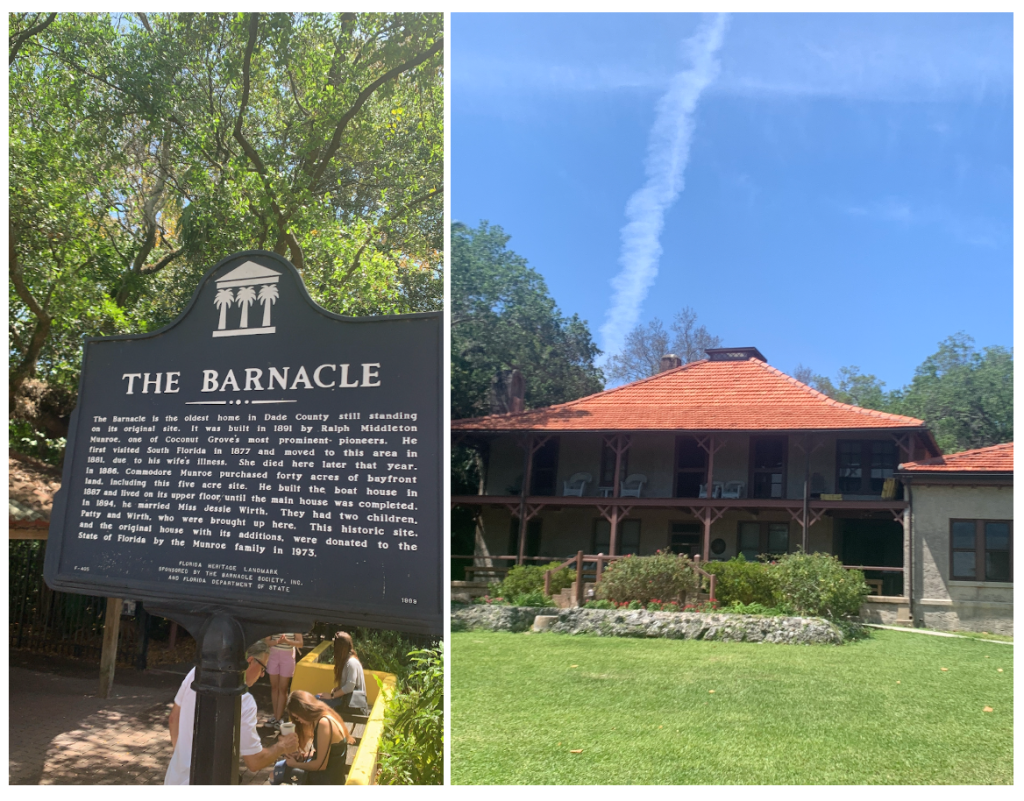
The barnacle historic state park
The Barnacle Historic State Park is a small, five acre park that is home to the oldest house in Miami still standing on its original site. The house, named ‘The Barnacle’ by its original owner Ralph Munroe, has lived up to its name by withstanding multiple hurricanes and still holding on to its foundations as stubbornly as a barnacle since its construction in 1891. Besides the house, the park includes an unobstructed view of the bay, a boathouse also built by Munroe, and a well believed to have been built before Munroe even bought the property. Aside from its historical sites, however, the park also provides a roofed sports court and a few seating areas for lounging about.
Peacock park
Named after the famous Peacock Inn and located on the same acres of land it stood on back in the day, nowadays Peacock Park is filled with beautiful greenery and many spaces for enjoyment. Not only does this park have a beautiful view of the water, but it also provides multiple sports fields for people to enjoy all along its 9 acre wide plot.
Regatta park
Regatta Park, named after the sailing regattas that often take place within its view, is a wonderful place for sailing and boat enthusiasts as well as general park fun. For those that love the sea, the park offers boat ramps and water rentals. And for everyone else, Regatta Park is filled with amenities such as picnic tables, bike racks, and wonderful bayside views.
Transportation
Metrorail
The Metrorail’s orange line runs through Coconut Grove, stopping at the intersection of South Dixie Highway and West 27th Avenue. The Metrorail can be used by purchasing a metrocard, either in person at a machine or through the Go app, for a very low price. The Metrorail is ideal if you’re traveling far, and is widespread enough to take you all over Miami from whatever station you enter from.
METROBUS
The Metrobus is also a great alternative if you’re traveling long distances to or from the Grove. The buses make a few stops in Coconut Grove, from SW 27th Street all the way to Bayshore Drive. Getting on these buses is easy, as there are many forms of payment – from buying an EASY card or ticket, to using the Go app, or even paying right there on the bus with cash or contactless payment methods.
TROLLEY
To travel within the neighborhood, the Coconut Grove trolley is a great option. The trolley stops all along the Grove and is completely free to use, within its operating hours – which usually run from 6:30 a.m. to 11 p.m.
CITI BIKES
Another great alternative for exploring the charming neighborhood of Coconut Grove is renting Citi bikes. These rental bike stations are found around the Grove and can be rented hourly or by the day.
Food

MR 01
Mr. 01 is a restaurant chain that originated in a small office building just off Lincoln Road, and now has spread its locations out to Coconut Grove. They offer comfortable outdoor seating, friendly service, and unique and delicious pizza combinations that brought it its fame. Out of all their stellar pizza recipes, the most recommended has to be the Star Luca pizza – which got its name from the star shape that the folded crust full of ricotta cheese resembles.
KRUS KITCHEN
Krus Kitchen’s atmosphere and dining experience are what sets it apart from other restaurants in the area. The restaurant offers both novelty and convenience to all its customers, due to the fact that they have a unique rotating menu that changes from week to week as well as a pantry that customers can buy ingredients from as they check out. In addition to that, by making the layout of the restaurant appear as casual as a house’s living room, they provide visitors with the same feeling of comfort and familiarity as a home cooked meal.
Atchana’s Homegrown Thai Restaurant
Located at the corner of the Commodore Plaza, this family owned Thai restaurant serves a variety of authentic and delicious meals – the most recommended of which being the house special ‘Satay’, that comes with various meats and its own small grill brought to your table. With its comfortable indoor and outdoor seating, friendly service, and large aquarium to help the ambience, this restaurant is a must-try!
Businesses
BOOKS & BOOKS
Books & Books is a Miami-born bookstore chain with a location in Coconut Grove, right next to Krüs Kitchen. The bookstore offers patrons a cafe, two stories of fully stocked, floor to ceiling bookshelves, and even a table highlighting books written by authors from Florida in order to support the local writing community. In addition to that, the bookstore often hosts and participates in local events to engage with their community and inspire young community members.
LOVESHACKFANCY
At the corner of a commercial center at the heart of Coconut Grove, LoveShackFancy boasts a unique clothes and shopping experience through their luxurious and distinctive decor and amazing service. Through its large windows, you catch a glimpse of baby pink covering every wall inside the store, as well as frilly, lacey accents to every piece of furniture inside. Walking inside feels as though you’ve stepped into a little girl’s fever dream, but the service is so attentive and individualized that to call LoveShackFancy anything less than extravagant would be a lie. With its individualized fittings, comfortable furniture, and never ending snack trays, it is an experience akin to visiting a personal tailor with every piece you try on.
THE BLONDE TULIP
Sitting on the block by Mary Street in Coconut Grove, this florist shop offers the right flowers for any occasion. Whether you’re just stopping by to get some freshly cut flowers for decoration in your house, picking up a bouquet for a special someone, or arranging the flowers needed for a giant event such as a wedding or ball – they have just the right arrangement for you. In addition to offering multiple flower arrangement packages, it also allows for curbside pickup and local delivery options for the busy customer on the run.
Summary
Overall, Coconut Grove is a thriving community with a rich history that has managed to strike a balance between bustling city life and the quiet, calm life of the suburbs. In a city full of highways and ever decreasing greenery, the Grove has maintained a walkable neighborhood that protects and preserves its parks and natural historical sites.
On the other hand, while businesses in the neighborhood are on the whole a good thing, the stores opening up in the Grove are becoming more and more high end and unaffordable for even the fairly wealthy residents living in the area. Not to mention many of the Bahamian residents who inherited their homes from generation to generation since the neighborhood’s inception are being slowly but surely pushed out of the neighborhood as it gains prestige and attention.
Coconut Grove has really struck a balance between being a great tourist attraction as well as a resourceful and pleasant neighborhood for its residents thus far, but it must continue to put its atmosphere over profits if it does not want to run the risk of having its rich niche culture overrun by gentrified skyscrapers and immensely expensive business that will drive out the residents of the area.
Works Cited
Overall, Coconut Grove is a thriving community with a rich history that has managed to strike a balance between bustling city life and the quiet, calm life of the suburbs. In a city full of highways and ever decreasing greenery, the Grove has maintained a walkable neighborhood that protects and preserves its parks and natural historical sites.
On the other hand, while businesses in the neighborhood are on the whole a good thing, the stores opening up in the Grove are becoming more and more high end and unaffordable for even the fairly wealthy residents living in the area. Not to mention many of the Bahamian residents who inherited their homes from generation to generation since the neighborhood’s inception are being slowly but surely pushed out of the neighborhood as it gains prestige and attention.
Coconut Grove has really struck a balance between being a great tourist attraction as well as a resourceful and pleasant neighborhood for its residents thus far, but it must continue to put its atmosphere over profits if it does not want to run the risk of having its rich niche culture overrun by gentrified skyscrapers and immensely expensive business that will drive out the residents of the area.













